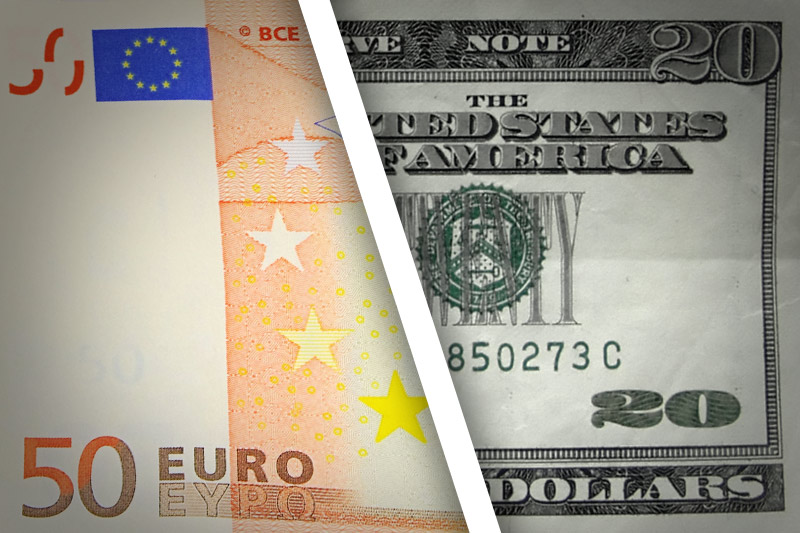Investing.com - The euro firmed against the dollar on Thursday after the minutes from the Federal Reserve's latest monetary policy meeting revealed the U.S. central bank will break out more monetary easing tools to spur recovery if the economy fails to gain steam.
Disappointing home sales in the U.S. also pushed the greenback down against the single currency.
In Asian trading on Thursday, EUR/USD was trading up 0.02% at 1.2531, up from a low of 1.2529 and off from a high of 1.2538.
The pair was likely to find support at 1.2432, the low from Aug. 22, and resistance at 1.2544, the high from Aug. 22.
The Fed will keep an eye on the economy going forward, and any signs that it is veering off course from an already tepid recovery will likely prompt a fresh round of quantitative easing.
"Many members judged that additional monetary accommodation would likely be warranted fairly soon unless incoming information pointed to a substantial and sustainable strengthening in the pace of the economic recovery," the minutes read.
"Several members noted the benefits of accumulating further information that could help clarify the contours of the outlook for economic activity and inflation as well as the need for further policy action."
Quantitative easing, under which the Fed buys bonds such as Treasury holdings and mortgage-backed securities from banks, weakens the dollar, sends interest rates falling and sends stocks, gold and often higher-yielding currencies rising.
Meanwhile, existing home sales came in weaker than expected.
Sales of previously owned homes rose 2.3 percent in July to 4.47 million units, the National Association of Realtors reported earlier.
Analysts were expecting the number to hit 4.52 million units, however.
Housing, a primary factor that sent the U.S. economy tumbling into the worst decline since the Great Depression, continues to show signs of bumping along a bottom and refuses to display marked improvement.
Meanwhile in Europe, a series of high-level meetings are taking place and investors were hoping leaders from different countries will come closer to finding a way out of the European debt crisis.
Luxemburg’s Prime Minister Jean-Claude Juncker, also head of a group of eurozone finance ministers, was set to meet with Greek Prime Minister Antonis Samaras, while German Chancellor Angela Merkel is scheduled to meet with French President Francois Hollande on Thursday.
Separately, market observers continue to hypothesize that the European Central Bank is growing increasingly likely to implementing policy measures to help stabilize the euro zone's debt markets, possibly by buying sovereign bonds in troubled nations to lower borrowing costs.
The euro, meanwhile, was up against the pound and down against the yen, with EUR/GBP up 0.01% at 0.7890, and EUR/JPY trading down 0.03% at 98.43.
Later Thursday, the eurozone will release preliminary data on manufacturing and service-sector growth, while France and Germany are also to release individual reports.
Germany will release gross domestic product data.
The U.S. will release initial jobless claims, followed by preliminary data on manufacturing activity and official data on new home sales.
Disappointing home sales in the U.S. also pushed the greenback down against the single currency.
In Asian trading on Thursday, EUR/USD was trading up 0.02% at 1.2531, up from a low of 1.2529 and off from a high of 1.2538.
The pair was likely to find support at 1.2432, the low from Aug. 22, and resistance at 1.2544, the high from Aug. 22.
The Fed will keep an eye on the economy going forward, and any signs that it is veering off course from an already tepid recovery will likely prompt a fresh round of quantitative easing.
"Many members judged that additional monetary accommodation would likely be warranted fairly soon unless incoming information pointed to a substantial and sustainable strengthening in the pace of the economic recovery," the minutes read.
"Several members noted the benefits of accumulating further information that could help clarify the contours of the outlook for economic activity and inflation as well as the need for further policy action."
Quantitative easing, under which the Fed buys bonds such as Treasury holdings and mortgage-backed securities from banks, weakens the dollar, sends interest rates falling and sends stocks, gold and often higher-yielding currencies rising.
Meanwhile, existing home sales came in weaker than expected.
Sales of previously owned homes rose 2.3 percent in July to 4.47 million units, the National Association of Realtors reported earlier.
Analysts were expecting the number to hit 4.52 million units, however.
Housing, a primary factor that sent the U.S. economy tumbling into the worst decline since the Great Depression, continues to show signs of bumping along a bottom and refuses to display marked improvement.
Meanwhile in Europe, a series of high-level meetings are taking place and investors were hoping leaders from different countries will come closer to finding a way out of the European debt crisis.
Luxemburg’s Prime Minister Jean-Claude Juncker, also head of a group of eurozone finance ministers, was set to meet with Greek Prime Minister Antonis Samaras, while German Chancellor Angela Merkel is scheduled to meet with French President Francois Hollande on Thursday.
Separately, market observers continue to hypothesize that the European Central Bank is growing increasingly likely to implementing policy measures to help stabilize the euro zone's debt markets, possibly by buying sovereign bonds in troubled nations to lower borrowing costs.
The euro, meanwhile, was up against the pound and down against the yen, with EUR/GBP up 0.01% at 0.7890, and EUR/JPY trading down 0.03% at 98.43.
Later Thursday, the eurozone will release preliminary data on manufacturing and service-sector growth, while France and Germany are also to release individual reports.
Germany will release gross domestic product data.
The U.S. will release initial jobless claims, followed by preliminary data on manufacturing activity and official data on new home sales.
